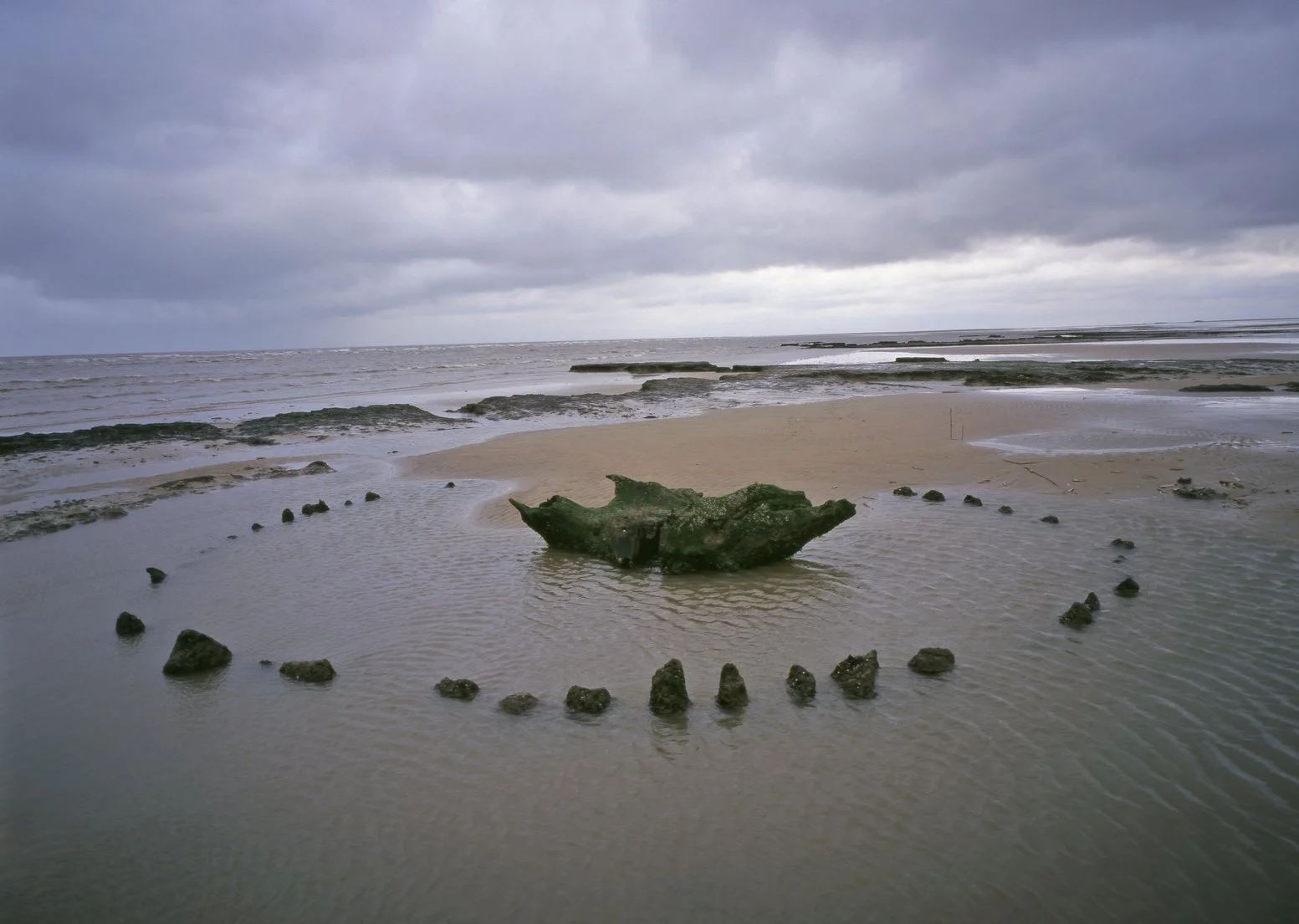A recent study published in GeoJournal proposes that Seahenge was built to conduct rituals aimed at prolonging the summer during the extreme climatic changes of the 3rd millennium BC.
Seahenge, also known as Holme I, is a prehistoric timber circle monument located on the English coast in the county of Norfolk.
Seahenge, along with the nearby timber circle, Holme II, was built during the early Bronze Age around 2049 BC. Seahenge consists of fifty-five small split oak trunks forming a circular enclosure with an upturned tree root in the centre.
The monument would have been positioned in an area protected from the sea by sand dunes and mud flats. This swampy area created a layer of peat which slowly covered the timbers, protecting them from decay.
Over the centuries, changing sea levels have meant that the inland monument is now located on the coast, which has become exposed due to eroding sand and peat.
The study also looked at Holme II, a much larger monument consisting of two concentric timber circles surrounding a hurdle-lined pit containing two oak logs.
Previous theories propose that Seahenge and Holme II were constructed around the same time, either as burial markers or for sky burials, where the deceased would be placed in the monument to be gradually consumed by carrion-eating birds.
Study author, Dr Nance, proposes an alternative explanation. He suggests that both monuments were constructed during a bitterly cold climatic period for rituals, intended to extend the summer and the return of warmer weather.
Dr Nance explains: “Dating of the Seahenge timbers showed they were felled in the spring, and it was considered most probable that these timbers were aligned with sunrise on the summer solstice. We know that the period in which they were constructed 4,000 years ago was a prolonged period of decreased atmospheric temperatures and severe winters and late springs placing these early coastal societies under stress. It seems most likely that these monuments had the common intention to end this existential threat but they had different functions.”
He points to the alignment of Seahenge with sunrise on the summer solstice and suggests that its function was to mimic the ‘pen’ described in folklore for an unfledged cuckoo with the intention to keep the bird singing and thereby extend the summer.
“Summer solstice was the date when according to folklore the cuckoo, symbolising fertility, traditionally stopped singing, returned to the Otherworld and the summer went with it,” Dr Nance added.
“The monument’s form appears to imitate two supposed winter dwellings of the cuckoo remembered in folklore: a hollow tree or ‘the bowers of the Otherworld’ represented by the upturned oak-stump at its centre. This ritual is remembered in the ‘myth of the pent cuckoo’ where an unfledged cuckoo was placed into a thorn bush and the bird was ‘walled-in’ to extend the summer but it always flew away.”
For Holme II he points to legends of ‘sacred kings’ described in Iron Age Ireland and northern Britain who were sacrificed if misfortune fell on the community, as happened at Holme-next-the-sea, in an attempt to appease the goddess of Venus to restore harmony.
He said: “Evidence suggests that they were ritually-sacrificed every eight years at Samhain (now Halloween) coincident with the eight-year cycle of Venus.”
“The fixtures in Holme II that were thought to hold a coffin, are orientated towards sunrise on Samhain in 2049 when Venus was still visible. Both monuments are best explained as having different functions and associated rituals, but with a common intent: to end the severely cold weather.”
Header Image Credit : Alamy (Under Copyright)
Sources : Nance, D.A. Holme I (Seahenge) and Holme II: ritual responses to climate change in Early Bronze Age Britain. GeoJournal 89, 88 (2024). https://doi.org/10.1007/s10708-024-11088-5





